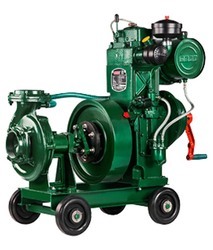In the study of a moving object, the concept of Inertia is the internal resisting force that helps the body to stop at a point after removing the influence of the external force. Now you have an idea of what is inertia. Let’s have a deep look into it.
What is Inertia?
By definition
Inertia is a resistance force of a physical object to any change in its state of motion
Inertia ∝ Mass
It is simply the amount of resistance to change in its velocity.
Q: Why inertia?
From Newton’s First Law An object at rest stays at rest and an object in motion stays in motion with the same speed and in the same direction unless resisted by an unbalanced force.
Understanding Newtons law: If we throw a ball into the sky with a velocity, according to Newton’s first law, if there is no such a resistible for against the ball, then the ball will go through the sky with the same velocity.(See the Gif below)

If there is a resistive force, then it will reach the ground after some time.
On the surface of the earth, air resistance and gravity are masked as inertia. this causes the resistance in the velocity of any moving object away from the earth.(See the Gif below)

Few more examples of What is Inertia?
- In space, It is very difficult to stop moving due to the lack of gravity.
- When peddling a bicycle, if you stop pedalling, the bike continues going until friction or gravity slows it down.
- When you stir coffee or tea and stop, the swirling motion continues due to inertia.
- A fan in motion when switched off it does not come to the state of rest immediately.
Conclusion
Inertia is a common phenomenon as it exists in every moving object. One well-known example is the flywheels(Energy reservoirs) is provided for the four-stroke engines to store some internal energy to give the additional stroke force during the weak stroke in four-stroke cycles.
Check this Mass moment of Inertia Calculator to calculate the Flywheel inertia, it will be fun 🙂


Sir you are great.
Such fundamentals things given by you in effective manner is rare.
Thank you. Glad you get everything that we explained.
Yes, But WHY do things have inertia? An inanimate object (say a table, chair or rocket ship) does not KNOW that it is moving or that it is at rest. Hence why does it ‘resist’ (a term that is widely used here, but refers to an intrinsic want or active, conscious, response) having its speed or direction altered?
I am finding it very difficult to find answers to this fundamental question of why.
I know what inertia is, and i have no problems calculating it.
But I wish to understand the deeper meaning behind why it exists in the first place.
I have read ramblings to do with the Higgs Boson particle and an intrinsic quality inherent in and amongst all matter, but this is just observation and fails to answer the simple question: why do things that are not sentient actively resist changes to their speed or direction! Any ideas, Sundar?
So I assume that you understand what is the inertia, but your question is all about why does it exist??
It exists due to the self-excitation created by the body(S) which is placed or attached to the moving body(M). Due to a sudden change in the speed/motion of the body(M), the body(S) can not kill its self-excitation and tend to change the position or resist the movement of the body(M).
I hope you understand my explanation. Pardon me if I didn’t get you what you are looking for. Let me know, this is a bit interesting to me as well.
Have a good day and stay safe my friend Joseph.